Astronomical ephemeris – June, 2021
Astronomical ephemeris – June, 2021
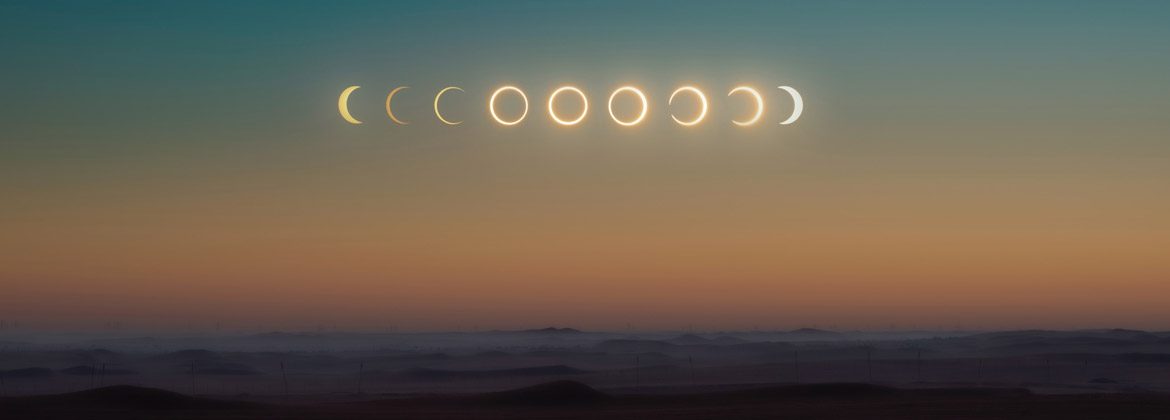
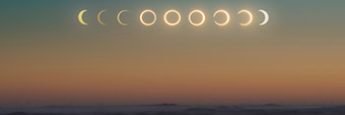
Astronomical events observable with the naked eye are a constant invitation from the cosmos to everyone, scientists or not, to direct their gaze to the sky in order to understand, or just admire, the beauty and grandeur of the universe.
Moon phases as seen in the northern hemisphere
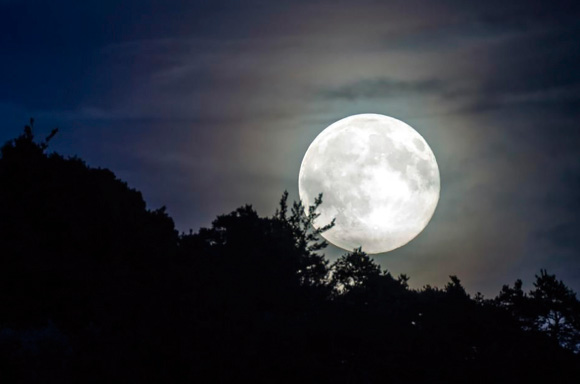
June 2 – Last Quarter
June 10 – New Moon
June 18 – First Quarter
June 24 – Full Moon
Conjunctions in June
The Moon, Jupiter and Saturn will star in the conjunctions observable with the naked eye, in both hemispheres, in the night sky of June. For us who are watching them here from the Earth, the three bodies will be relatively close to each other during the nights of June. They will be very close in four moments and form the so-called conjunction – a phenomenon in which two or more celestial bodies appear to be very close to each other in the sky from the angle of terrestrial observation.
These four moments will be:
June 1
Conjunction between the Moon and Jupiter
Observable on the eastern horizon, in the southern hemisphere, and southeast horizon, in the northern hemisphere, in the constellation Aquarius, approximately between 0:00 and 5:00 am (Brasília -3UTC).
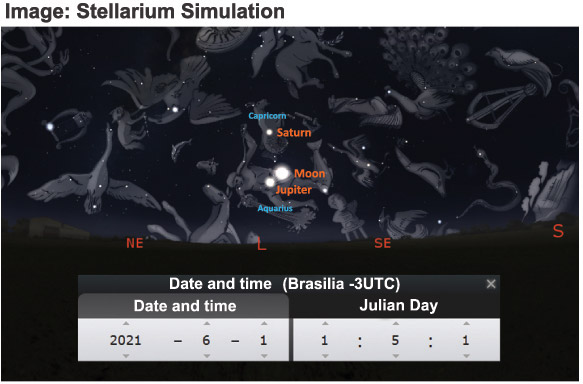
June 27
Conjunction between the Moon and Saturn
Observable on the eastern horizon, in the southern hemisphere, and southeastern horizon, in the northern hemisphere, in the constellation Capricorn, approximately between 0:00 and 5:00 am (Brasília -3UTC).
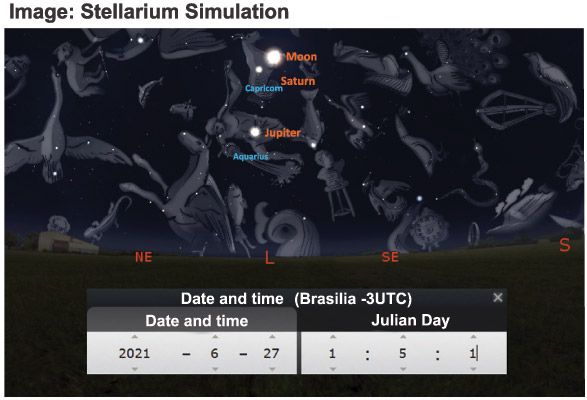
June 28
Conjunction between Jupiter, the Moon and Saturn
Triple conjunction observable on the eastern horizon in the southern hemisphere and southeastern horizon in the northern hemisphere, between the constellations of Aquarius and Capricorn, approximately between 0:00 am and 5:00 am (Brasília -3UTC).
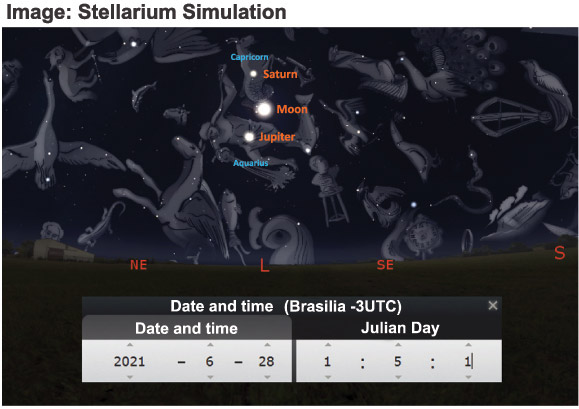
June 29
Conjunction between the Moon and Jupiter
Observable on the eastern horizon, in the southern hemisphere, and southeast horizon, in the northern hemisphere, in the constellation Aquarius, approximately between 0:00 and 5:00 am (Brasília -3UTC).
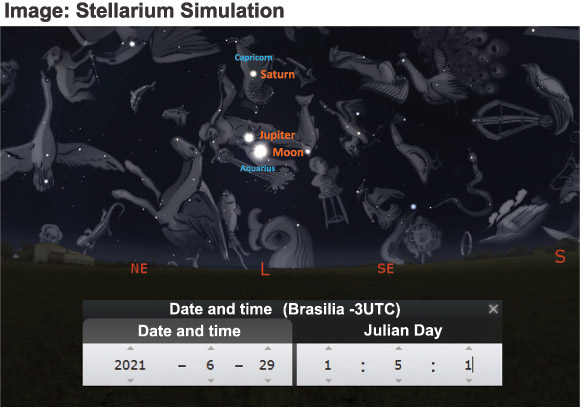
June 10
Annular Solar Eclipse
The new moon of June 10, as it passes in front of the Sun, will be between it and our planet, staging the first solar eclipse of this year, which will be an annular solar eclipse.
What is a solar eclipse?
The solar eclipse is a phenomenon that occurs when the Moon is in the new phase and aligns itself, or rather, is placed between the Earth and the Sun. Thus, the shadow projected on the Earth’s surface for a certain time, leaves it with a considerably decreased brightness or even completely darkened during the day.
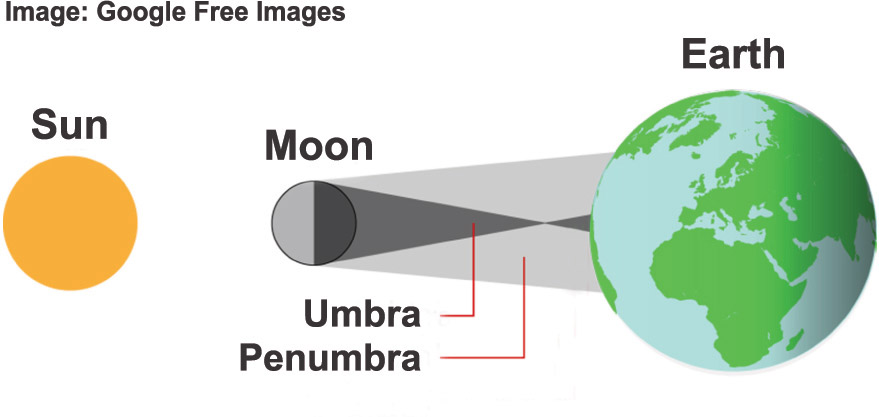
Why an annular solar eclipse?
Because the new moon will pass in front of the Sun exactly when it will be at its most distant orbital point from Earth, that is, at its apogee. Therefore, it will not be able to completely cover the solar disk; this allows one to see the outer atmosphere of the king star, the so-called solar crown or corona – the famous ring of fire.
This view of the Moon appearing to be perfectly inside the solar disk is a matter of perspective for the observer here on Earth, since the angular diameter of the Moon and the Sun in the sky is practically the same (+ or – 0.5º) for us, because although the Sun is about 400 times bigger than the Moon, it is 400 times further away.
A solar eclipse is not a routine phenomenon because the orbits of the Earth and the Moon have different formats and planes of inclination; this makes them meet only at distinct times. If it were not so, every month we would have a solar eclipse.
On June 10, in the northeast of Canada, Greenland, the Arctic Ocean – passing over the North Pole – and in the Russian Far East, the annular solar eclipse can be observed. However, in northern and eastern North America and northern Asia, a partial solar eclipse (to a greater or lesser extent depending on the region) will be observed. In Central and South America and Africa there will be no possibility to observe it.
The image at the side, by Michael Zeiler (GreatAmericanEclipse.com), will guide you, showing the obscurity of the eclipse – percentage of the Sun’s disk that is covered by the Moon in the maximum eclipse in Universal Time Coordinated (UTC).
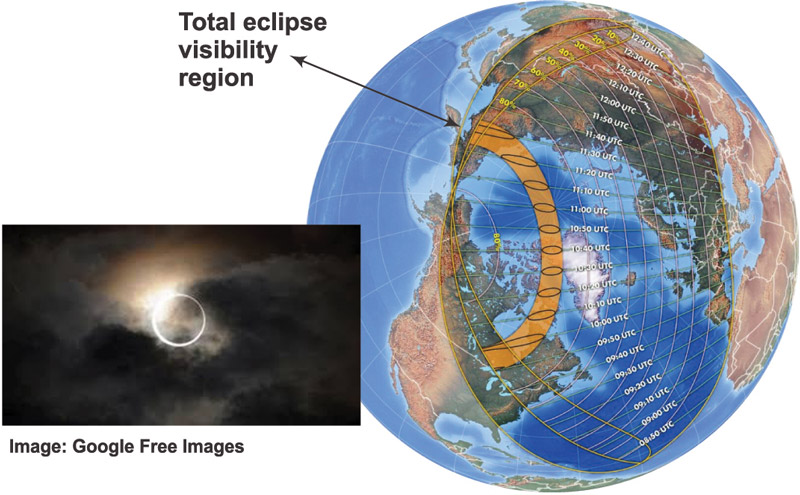
The eclipse begins at sunrise in Ontario, Canada, and circles the northern boundaries of the globe. The largest eclipse occurs at noon local time in northern Greenland and then passes over the Earth’s North Pole and ends at sunset in northeastern Siberia. At any point along this path, the annular eclipse will last for 3 minutes and 51 seconds out of a total of 100 minutes.
Observe the event safely using eclipse glasses.
It is not advisable to look directly at the sun, eclipsed or not, without adequate goggles. UV radiation from the sun can cause serious damage to your eyes.
June 21
Winter solstice in the southern hemisphere and summer solstice in the northern hemisphere
June 21 will be the shortest day of 2021 in the Southern hemisphere, marking the beginning of winter, and the longest day in the Northern hemisphere, marking the beginning of winter.
This event occurs because the Earth’s axis of rotation, i.e. its polar axis, has a tilt angle of 23º27′ in relation to the plane of its orbit around the Sun – its translational movement. In this condition, the north and south poles of the Earth sometimes tilt towards the Sun, sometimes tilt away from it. This results in a difference in the incidence of sunlight – insolation – in the hemispheres. When the insolation is less in one hemisphere, the winter solstice occurs, generating a longer night; and when it is bigger, the summer solstice occurs, generating a longer day.
This happens twice a year, in June and December.
On the 21st, there will be the reverse solstice, in the southern hemisphere, and summer solstice, in the northern hemisphere.
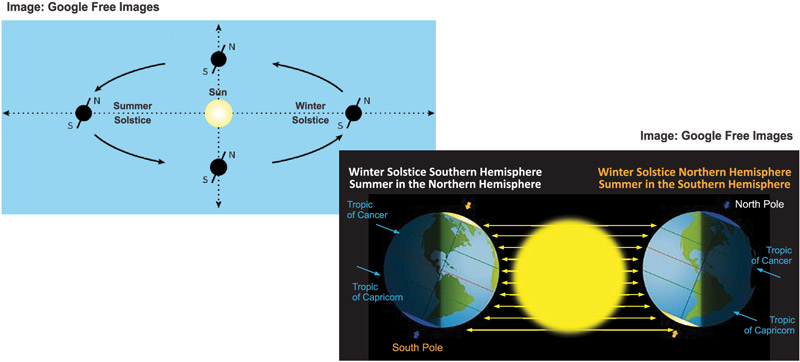
June 24
Super Moon
The third and last supermoon, of the three consecutives of 2021, will take place on the 24th.
Recalling, this phenomenon is possible when the Moon is at the same time in the full phase and the perigee, its moment of closest approximation to our planet (about 357,000 km) – the result of the variations in the distances between them, the Moon and the Earth, since our planet is not precisely in the center of the lunar orbit, and the lunar orbit is an ellipse. In this event, the Moon appears to have a diameter 7% larger than usual and a brightness 30% more intense, which makes the highlight its brightness and not the increase in its size.
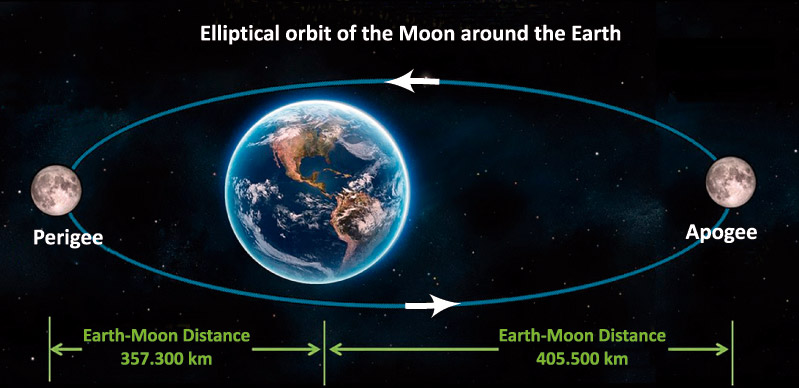
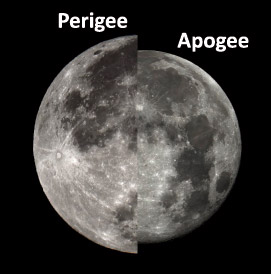
It is also worth remembering that the term supermoon was first used in 1979, by astrologer Richard Nolle, who was looking for a popular way to describe the lunar perigee in its full phase, but the official name of the phenomenon in astronomy is Perigean Full Moon.
Observable around the world.
Source: jpl.nasa.gov/calendar / solarsystem.nasa.gov / in-the-sky.org / Stellarium.org / rmg.co.uk / astro.if.ufrgs / earthsky.org / space.com / timeanddate.com / ssd.jpl.nasa.org / derekscope.co.uk / GreatAmericanEclipse.com
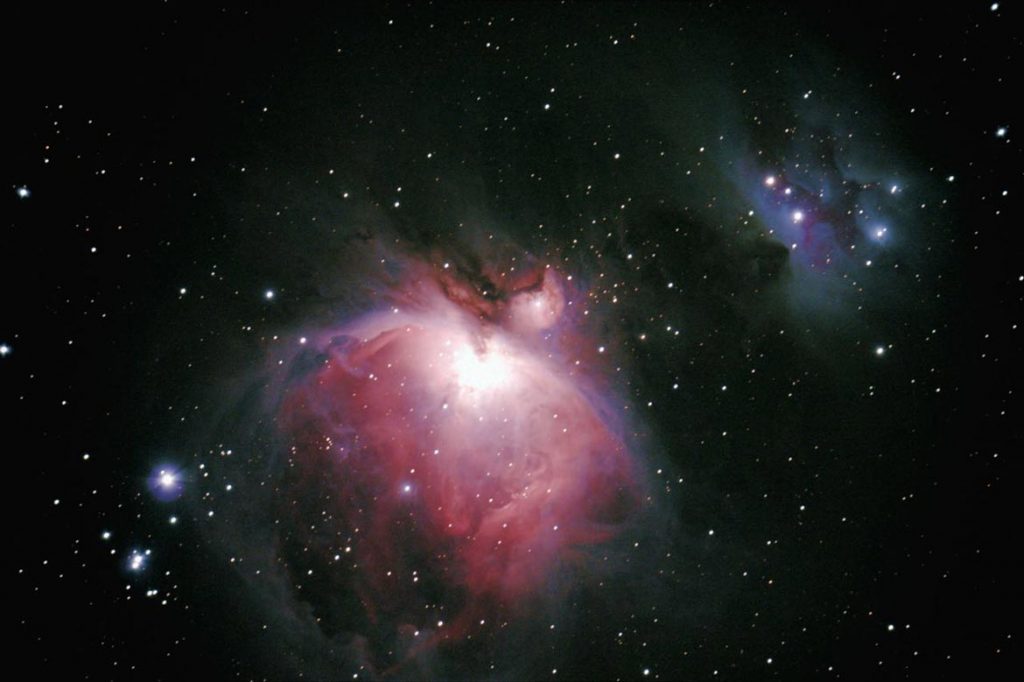
Astronomical ephemerides is a monthly calendar prepared by the Astronomy Sector, which is one of the 12 that make up the PRÓ-VIDA Laboratory Department. In the department, studies, research and scientific experiments related to various themes are developed, as well as field activities and lectures.

Astronomical ephemerides is a monthly calendar prepared by the Astronomy Sector, which is one of the 12 that make up the PRÓ-VIDA Laboratory Department. In the department, studies, research and scientific experiments related to various themes are developed, as well as field activities and lectures.









